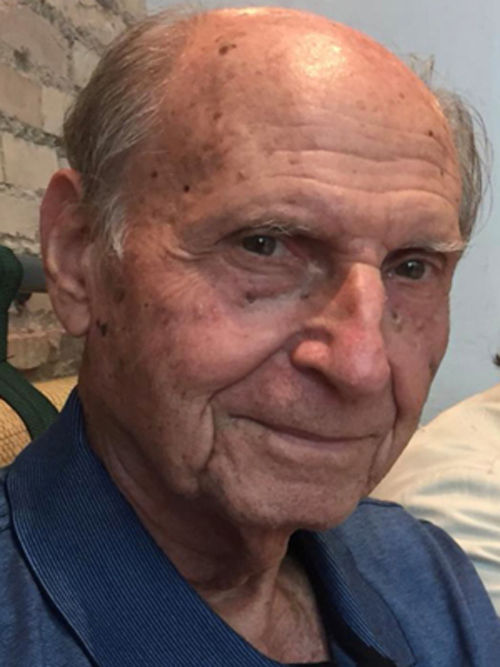We recently lost Francisco Navarro López, one of the pioneers of modern cardiology as we know it today. Paco, as he liked to be called by his friends and colleagues, completed his medical degree in Barcelona in 1956, where he went on to receive the outstanding prize for his doctorate and become a specialist in internal medicine and cardiology. His search for the best training took him out of Spain to, initially, Lyon and Paris. From 1959 to 1962 he worked at the prestigious Instituto de Cardiología Ignacio Chávez in Mexico, where he completed his residency. His next destination was the cardiopulmonary laboratory at the University of Chicago, from 1962 to 1963, where he learned the newly-emerged cardiac catheterization techniques introduced by Mason Sones. I had the great good fortune to receive this expertise, which Paco passed on to me during my residency at Hospital Clínic de Barcelona.
The 1960s saw the beginnings of a dramatic change in medicine in Spain. The MIR system was born, and the first specialty services were created. This seismic shift was piloted by Hospital General de Asturias, under the guidance of Dr Carles Soler Durall. Paco passed the public service entry examination in 1964 and was given the job of setting up the first cardiology service in Spain and establishing specialist training in the discipline. He was a pioneer in understanding the importance of a formal specialty training program through the MIR system. As well as this enormous task, Paco became the medical director of this prestigious institution.
In 1972, Hospital Clínic de Barcelona was overhauled with the creation of a new model of care divided into services and units. Paco was chosen to take on the challenge of creating the first comprehensive cardiology service that included clinical cardiology, the coronary unit, and the catheterization laboratory (to which would later be added the electrophysiology laboratory), following what he called “the Chicago model” and which formed the basis of modern-day cardiology services in Spain. He was one of the first to recognize that cardiologists should be responsible for the acute care of acute myocardial infarction. In the early 1980s, he led the creation of the cardiac surgery unit at Hospital Clínic de Barcelona, with the first extracorporeal coronary bypass surgery taking place in 1981. One of Paco's greatest virtues was to employ well-trained, highly-talented specialists and allow them to develop their own units within the service. Under his direction, the cardiology service at Hospital Clínic de Barcelona reached its most productive, golden era and I think that all of us who worked alongside him during that period, without exception, will recognize this enormous achievement. Paco dedicated his life to the publicly-funded health system –he believed in it and defended it, from his progressive perspective until his retirement in 1998, after 25 years at the helm of cardiology in Hospital Clínic de Barcelona.
But Paco was outstanding not only in the clinical field. He took on every teaching role in his beloved University of Barcelona: tenured professor, lecturer in medicine, director of the department of medicine, dean of the faculty, and professor emeritus. He was also an uncompromising teacher. I remember my first cardiology class in the fourth year of university. He entered the classroom, said “buenos días”, turned to the blackboard and began writing and talking in English. Immediately, a murmur of surprise went round the students. Paco turned around and, with a smirk, said, “What, you’re studying medicine and you can’t speak English?” and then left the classroom. I thought it was fantastic, though I’m sure that others may have thought it strange.
His involvement in scientific societies and committees was also prolific: he was president of the Catalan Society of Cardiology; president of the Spanish Society of Cardiology, where he bought the premises for the society's first site, pushed the revival of the national conferences and Revista Española de Cardiología; president of the National Committee of Cardiology of the ministry of health, where he contributed to the reform of the specialty training program; and vice president of the European Society of Cardiology. He was also decorated with a multitude of national and international awards and honors, such as the Premio Rey Jaime I for clinical medicine, the Narcís Monturiol Medal for scientific and technological achievement and the European Society of Cardiology's silver medal. His contribution to science is widely acknowledged.
However, his most distinguishing feature was his human side. Paco was a simple, but at the same time complex, man. He was warm and kind-hearted. There was no place for authoritarian gestures or haughty behavior. He was always available to help and guide those who needed it. At times a genius, at times an eccentric, depending on the lens through which one looked. If I could convey the feelings of those who were close to him, Paco was, above all, a very likeable person. Besides medicine, he had two other great passions: golf and the sea, which he cultivated until close to the end. I shared with him not only his great passion for cardiology, but also for the sea. As the wise poet Machado said, “You make your path by walking, and when you look back, you see a path that you will never walk again. Wanderer, there is no path, only wakes upon the sea.”
Dearest Paco, I know that wherever you are, you will continue to leave a wake of brilliance…in the heavens, or, perhaps better yet, upon our beautiful sea.

